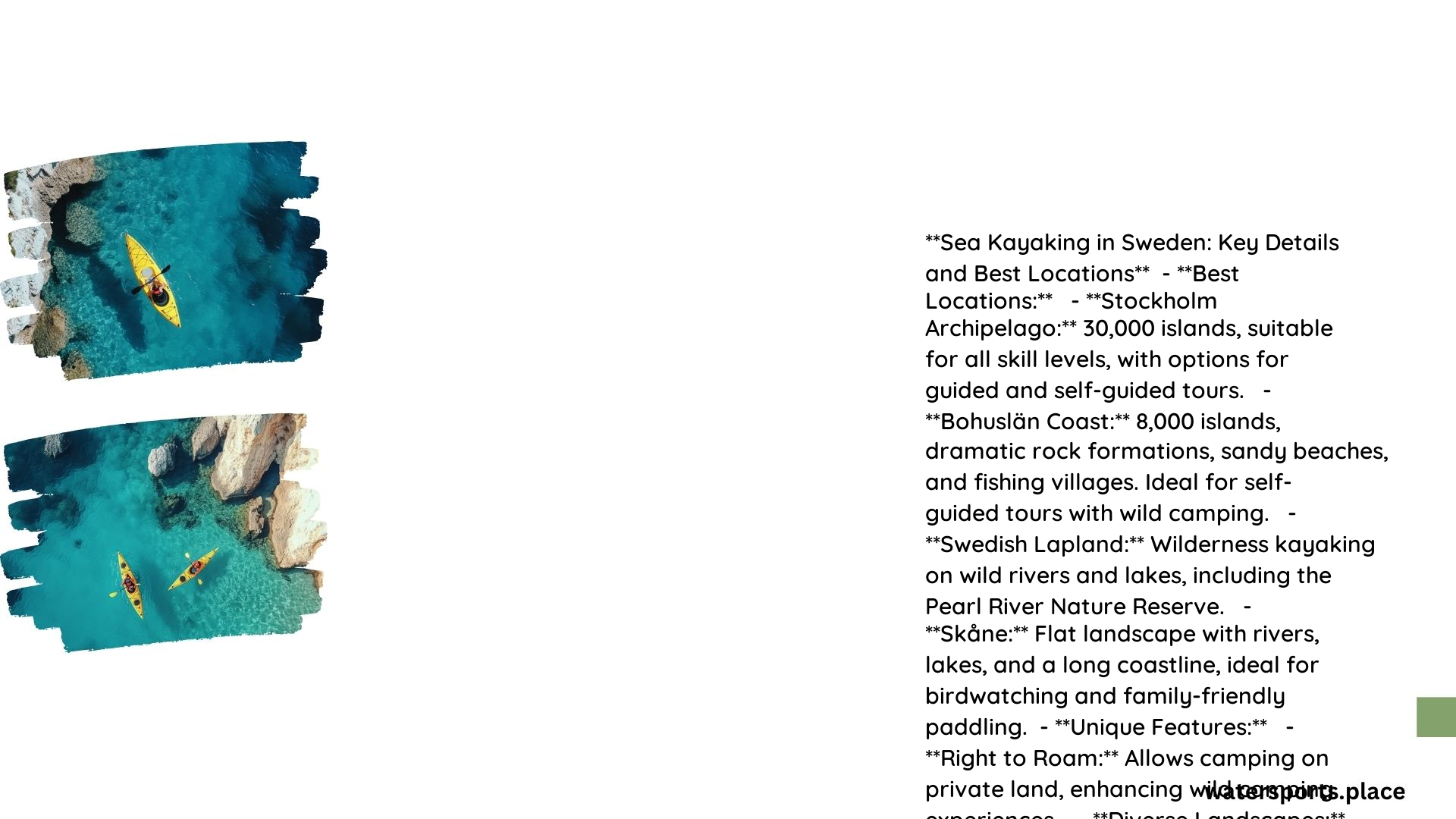Sweden offers a diverse range of kayaking spots, each with its unique characteristics and attractions. From the stunning Stockholm Archipelago to the dramatic landscapes of the High Coast, Sweden is a premier destination for sea kayaking enthusiasts.
What are the Best Kayaking Spots in Sweden?
-
Stockholm Archipelago: Located just 45 minutes from Stockholm, this archipelago features over 30,000 islands, making it ideal for both beginners and experienced kayakers. The village of Dalarö is a popular launch point.
-
Bohuslän Coast and Gothenburg Archipelago: This region on the west coast is known for its 8,000 islands, sandy beaches, and quaint fishing villages. Fjällbacka and the Koster Islands are particularly popular.
-
High Coast (Höga Kusten): Located about 6 hours north of Stockholm, this area is known for its dramatic landscape with steep rock walls and beautiful lagoons. It is a UNESCO World Heritage site.
-
Swedish Lapland: For a more wilderness-oriented experience, Swedish Lapland offers kayaking on wild rivers and huge lakes surrounded by pristine forests. The Torne, Ume, Kalix, and Lule rivers are notable.
-
Skåne Province: In southern Sweden, Skåne offers a flat landscape with many lakes and rivers, ideal for birdwatching and family-friendly paddling excursions.
What is the Best Time to Go Sea Kayaking in Sweden?

- Summer (June to August): This is the best time for kayaking in Sweden, with warm weather, long daylight hours, and generally calm seas. However, it is also the peak tourist season.
- Spring (April to May) and Autumn (September to October): These seasons offer cooler temperatures but fewer tourists. The weather can be more unpredictable, but the scenery is often more vibrant.
- Winter: Not recommended for sea kayaking due to cold temperatures and potential ice cover.
What are the Water Temperatures for Sea Kayaking in Sweden?
- Water temperatures vary significantly by season. In summer, water temperatures can range from 15°C to 20°C (59°F to 68°F), while in spring and autumn, they are generally cooler, around 10°C to 15°C (50°F to 59°F).
What Level of Kayaking Experience is Needed for Sea Kayaking in Sweden?
- Beginners: Many areas, such as the Stockholm Archipelago and the Bohuslän Coast, are suitable for beginners. Guided tours are available, and equipment is provided.
- Intermediate to Advanced: Areas like the High Coast and Swedish Lapland offer more challenging routes with dramatic landscapes and potentially wilder conditions. These areas are better suited for those with some experience.
What are the Regulations and Best Practices for Wild Camping in Sweden?
- Regulations: Sweden has the “Right to Roam” (Allemansrätten) law, which allows camping in most areas as long as you follow basic rules: camp at least 150 meters away from houses, do not disturb the environment, and leave no trace.
- Designated Areas: While wild camping is allowed, there are also many designated campsites with facilities. These can be a good option if you prefer more amenities.
- Environmental Considerations: Always follow the principles of “Leave No Trace”: dispose of waste properly, do not disturb wildlife, and avoid damaging vegetation.
What are the Costs and Planning Considerations for a Sea Kayaking Trip in Sweden?
- Kayak Rentals: Costs vary depending on the location and duration of the rental. Expect to pay around 200-500 SEK (approximately $20-$50 USD) per day for a kayak rental.
- Guided Tours: Guided tours can range from a few hundred to several thousand SEK, depending on the length and type of tour.
- Camping Supplies: Costs for camping supplies can vary widely, with a basic camping setup costing around 1,000-3,000 SEK (approximately $100-$300 USD) for a complete set.
How to Plan a Successful Sea Kayaking Trip in Sweden?
- Choose Your Destination: Select a region based on your skill level and preferences.
- Check the Weather: Plan according to seasonal weather patterns and be prepared for changing conditions.
- Rent Equipment: Book kayak rentals and camping gear in advance, especially during peak season.
- Plan Your Route: Decide on a route that suits your skill level and time constraints. Consider guided tours if you are new to kayaking.
- Respect the Environment: Follow the principles of “Leave No Trace” and respect local regulations.
- Prepare for Camping: Ensure you have the necessary camping gear and know how to use it safely.
